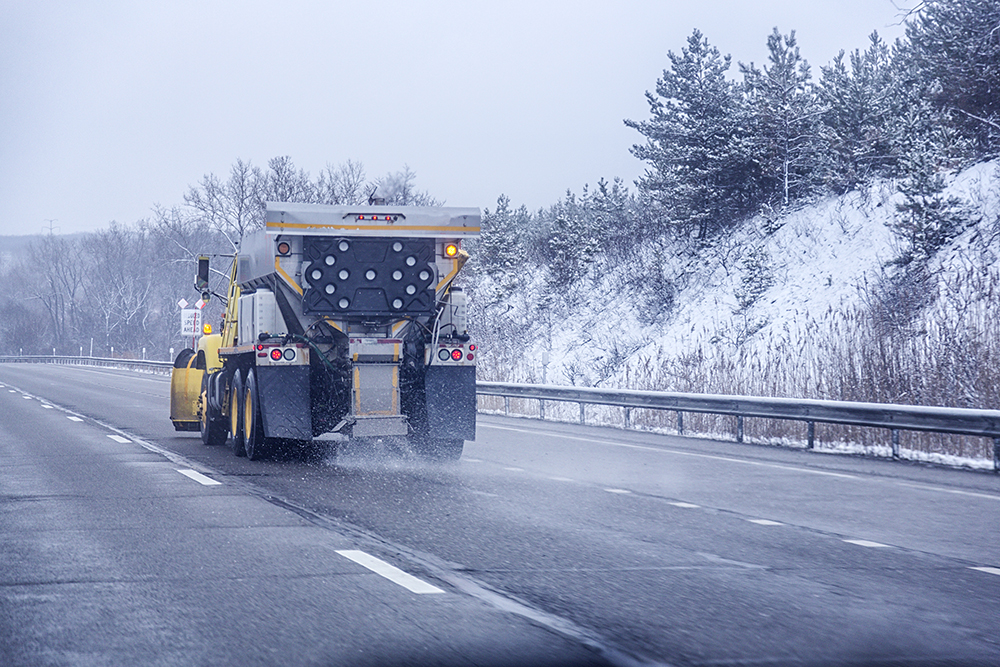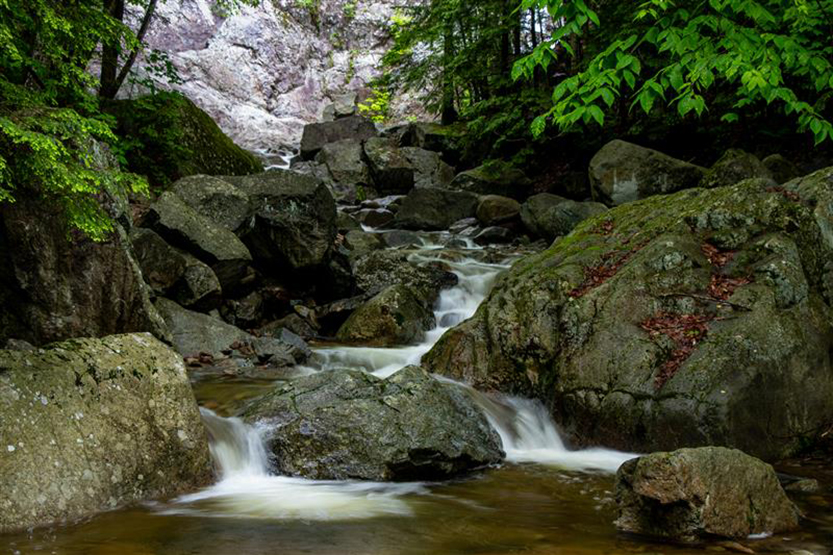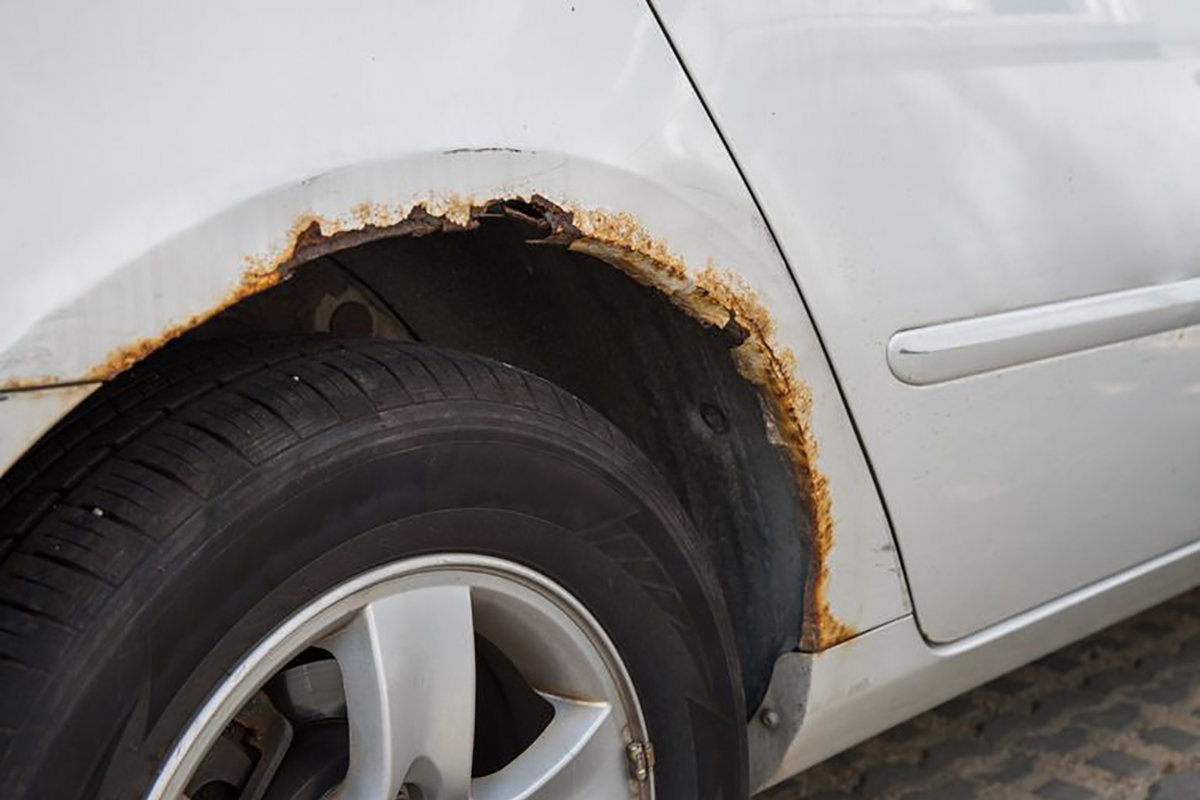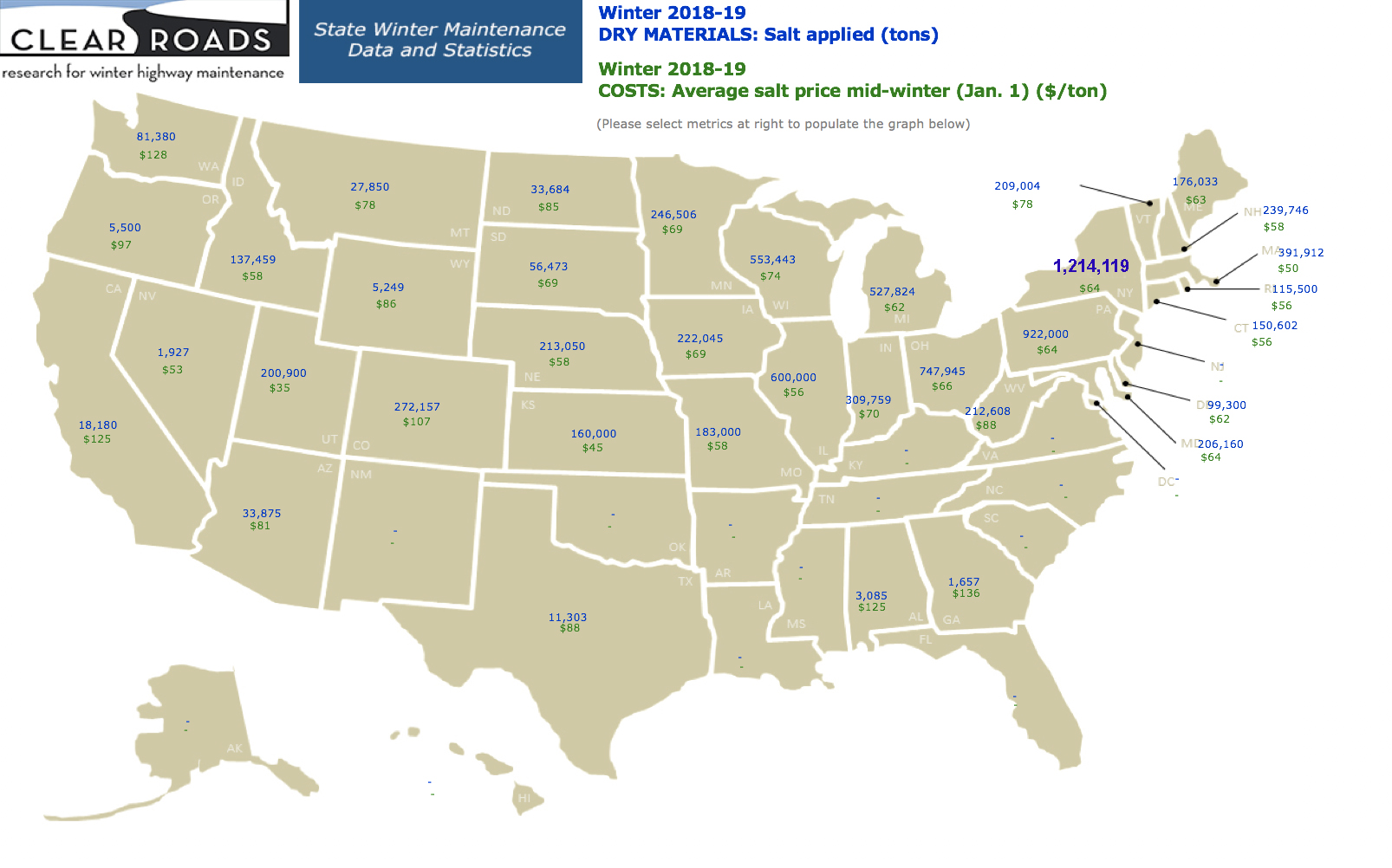
The Costs of Road Salt in the Adirondack Park
By: Casey Marvel - Adirondack Council Policy Fellow
Thursday, May 28, 2020
The Adirondacks are synonymous with harsh winter conditions that bring, on average, over 100 inches of snowfall a year. Snowcapped peaks, frozen ponds and still forests encapsulate all which we love about winters in the Adirondacks. Winter transforms the Park into a winter wonderland full of world-class winter recreational activities and local seasonal traditions. This is part of what makes the Adirondack Park special and is one of many reasons why so many choose to visit during the winter months.
However, heavy snowfall and freezing conditions present real challenges for keeping the Park’s roadways open and safe for travel for its residents and visitors. Currently, the primary substance used to make state roadways safe for travel is road salt.
But wait. It’s spring. The weather is turning warmer. Why do we need to think about wintry roads and road salt now? Because, while road salt melts away the challenges presented by wintry conditions, its use is negatively impacting the waters, communities, wilderness, and wildlands of our national treasure all year long. We are learning more about the public health, environmental and other indirect costs that are associated with road salt use. And we are realizing, it’s not a cheap solution. The use of road salt costs us all in many ways.
Direct Cost of Road Salt
New York State is the largest user of road salt in North America. In the winter of 2019, the state used 1,214,119 tons of road salt, nearly equal to the total salt applied by the six other northeastern states. At an average of $64 a ton, it cost state taxpayers an estimated $77 million for road salt, and over $16 million was spent within the Adirondack Park.
Indirect Costs
Public Health and Environmental Impacts
Once road salt is purchased, transported and applied to the road, it is easy to forget about the role this chemical continues to play in our lives, long after it has melted the ice away. Heavy road salt use compounds in unseen ways not often accounted for, resulting in hidden, indirect costs on the public. And we keep paying for it long after it has been poured onto our roads.
Once road salt is dropped on roadways and put to use, it does not just magically disappear. Road salt washes off the side of roadways and seeps into the ground or nearby waterbodies. This runoff pollutes local watersheds and causes major environmental and public health implications.

Road salt is extremely toxic to Adirondack fish and aquatic vegetation that depend on specific water salinities. Road side vegetation is also vulnerable to “salt burn” caused by road salt runoff. Recent research shows that signature Adirondack lakes such as Lake George, Mirror Lake and the Cascade Lakes are all showing elevated levels of road salt.
Private drinking water wells are also being damaged by road salt runoff. The Adirondack Watershed Institute recently tested more than 500 private drinking wells. They found that more than half of the wells exceeded safe sodium levels and more than one quarter exceeded safe chloride levels. High sodium and chloride levels in drinking water can cause major health problems such as high blood pressure and kidney damage. In addition, those who own wells that become polluted often do not realize it until these types of health problems occur. Once road salt pollutes nearby groundwater it is expected to take hundreds of years to wash away, leaving once clean drinking water sources in a toxic and unusable condition.
Recent stories from across the Adirondacks have revealed that residents with polluted wells are forced to buy bottled water or truck it from elsewhere, creating a major burden on their daily lives. Medical bills, depreciation in property value and cost of water replacement are all real, long-term costs associated with current road salt use in the Adirondacks. While clear and safe winter roads are a necessity, it undeniable that it is in our best interest to find better ways of managing our roadways that avoid leaving residents with toxic wells and related health consequences.
Clean water is the lifeblood of the Adirondacks, and excessive road salt usage is jeopardizing the long-term health of pristine waterbodies that support the Park’s environment, tourism, economy, and the health of its residents and visitors. Irreversible damage to these natural resources further highlights that current road salt application may be costing the Park more than we are aware.

Damage to Infrastructure, Vehicles and Roads
Road salt is a corrosive chemical, which means everything from vehicles to bridges and other road infrastructure, and even the roads themselves, are impacted. It is estimated that these types of indirect costs in the United States add up to $16-$19 billion per year. While it may not be possible to completely avoid these costs at this moment, it does show that our current practices are costing us in more ways than meets the eye. This also raises the question that if road salt usage could be reduced by even just 20%, how much of these indirect costs could be avoided and how much money could be saved? Every dollar spent on combatting the negative side effects of road salt usage is one more dollar that could be used for other crucial projects or services in the Adirondacks.
Anyone who has driven a vehicle on state roads through an Adirondack winter can attest to the road salt that builds up on their vehicle. This can lead to rust damage to a vehicle’s exterior, floor panels, exhaust, and brakes, and depreciation in vehicle value which are costly expenses. It is estimated that $133 should be added to the cost of every ton of road salt to account for these indirect damages that occur to vehicles.

Simply put, road salt is costing places like the Adirondacks more than we realized. Are there more efficient ways for the state to manage its roads in winter that won’t result in such harmful hidden, indirect costs and could save taxpayer dollars? All costs of road salt, direct and indirect, should be considered as decision makers plan our winter road management practices and decipher the appropriate amount of road salt to use.
For more detailed information, please read the Council’s 2009 report, “Low Sodium Diet – Curbing New York’s Appetite for Damaging Road Salt.”
Thinking About a Path Forward
Thankfully, just as road managers decided to shift to salt for winter road maintenance in the 1980s, we can look to newer technologies once again. However, there is no easy, silver bullet replacement for road salt - no single strategy is going to solve this problem overnight. However, North Country lawmakers in the state legislature have championed new pending legislation that would create an Adirondack Road Salt Task Force and Pilot Program. Senator Betty Little and Assemblyman Billy Jones introduced the legislation in the fall of 2019, and are optimistic that if the legislature reconvenes this year, the bill could get passed. This would be a major victory for public health, the environment and communities in the Adirondacks.
Please click HERE to urge the sponsors of this legislation to pass the bills this year.
While we all appreciate having safe roads in the winter, it is clear that the current amount of road salt we are using is not sustainable. It is costing taxpayers a high annual expense, causing damage to our public infrastructure and vehicles, and worse off, it is jeopardizing the health of Adirondack residents. The good news is that we have lawmakers who are leading on this issue and fighting to create a task force that will enable experts to make recommendations on how to reduce road salt usage while maintaining safe public roads. There is also a growing circle of engaged parties that helps educate and advocate on this issue including the Adirondack Watershed Institute, ADK Action, the Fund for Lake George, the Ausable River Association, the Town of Wilmington and many other local governments, and staff from both the Departments of Environmental Conservation and Transportation.
 Casey Marvel is the Policy Fellow in the Council’s Albany office. He assists the government relations and communication teams by tracking legislation, researching issues and advocating for the Adirondacks. A native of Niskayuna, New York, Casey recently completed his Bachelor’s Degree in Political Science from the University of Albany and is currently pursuing his Master’s in Political Science. Casey has always been intrigued and passionate about the Adirondacks, having visited the Park throughout his life, from fishing at Paradox Lake, to recently pursuing the 46 High Peaks.
Casey Marvel is the Policy Fellow in the Council’s Albany office. He assists the government relations and communication teams by tracking legislation, researching issues and advocating for the Adirondacks. A native of Niskayuna, New York, Casey recently completed his Bachelor’s Degree in Political Science from the University of Albany and is currently pursuing his Master’s in Political Science. Casey has always been intrigued and passionate about the Adirondacks, having visited the Park throughout his life, from fishing at Paradox Lake, to recently pursuing the 46 High Peaks.





